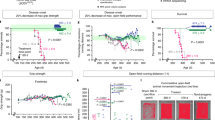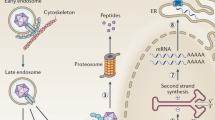Abstract
Recombinant AAV (rAAV) vectors are a suitable vector for gene therapy studies because of desired characteristics such as low immunogenicity, transfection of non-dividing and dividing cells, and long-term expression of the transgene. In this study, the large-scale production of single stranded (ss) and self-complementary (sc) AAV9 carrying the human survival motor neuron (SMN) gene (AAV9-SMN) suitable for in vivo gene therapy studies of SMA was described. SMN cDNA has been cloned into pAAV-CB6-PI and pAAVsc-CB6-PI with and without its specific UTRs, respectively. Both plasmids bear CMV enhancer/beta-actin (CB) promoter, CMV IE enhancer, and polyadenylation signal sequences. 2.5 μg of constructed pAAV-CB6-PI-SMN and pAAVsc-CB6-PI-SMN cause to, respectively, 4.853- and 2.321-fold increases in SMN protein levels in transfected cells compared to untransfected cells. Ss and scAAV9-SMN vectors were also produced from these plasmids by transient transfection of HEK293 cells using CaCl2 solution. The silver staining and electron microscopy analysis demonstrated good quality of both isolated vectors, ssAAV9-SMN and scAAV9-SMN, with the titers of 2.00E+13 and 1.00E+13 GC/ml. The results of this study show that, the plasmid containing UTR elements causes to twice more SMN gene expression in transfected cells. The quality control results show that both produced ss and scAAV9-SMN are suitable for in vivo studies.




Similar content being viewed by others
References
Feldkötter, M., Schwarzer, V., Wirth, R., Wienker, T. F., & Wirth, B. (2002). Quantitative analyses of smn1 and smn2 based on real-time lightcycler pcr: fast and highly reliable carrier testing and prediction of severity of spinal muscular atrophy. The American Journal of Human Genetics, 70, 358–368.
Rossoll, W., & Bassell, G. J. (2009). Spinal muscular atrophy and a model for survival of motor neuron protein function in axonal ribonucleoprotein complexes. Results and Problems in Cell Differentiation, 48, 289–326.
D’Amico, A., Mercuri, E., Tiziano, F. D., & Bertini, E. (2011). Spinal muscular atrophy. Orphanet Journal of Rare Diseases, 6, 1–10.
Mulcahy, P. J., Iremonger, K., Karyka, E., Herranz-Martín, S., Shum, K. T., Tam, J. K., et al. (2014). Gene therapy: a promising approach to treating spinal muscular atrophy. Human Gene Therapy, 25, 575–586.
Foust, K. D., Wang, X., McGovern, V. L., Braun, L., Bevan, A. K., Haidet, A. M., et al. (2010). Rescue of the spinal muscular atrophy phenotype in a mouse model by early postnatal delivery of SMN. Nature Biotechnology, 28, 271–274.
Dominguez, E., Marais, T., Chatauret, N., Benkhelifa-Ziyyat, S., Duque, S., Ravassard, P., et al. (2011). Intravenous scAAV9 delivery of a codon-optimized SMN1 sequence rescues SMA mice. Human Molecular Genetics, 20, 681–693.
Benkhelifa-Ziyyat, S., Besse, A., Roda, M., Duque, S., Astord, S., Carcenac, R., et al. (2013). Intramuscular scAAV9-SMN injection mediates widespread gene delivery to the spinal cord and decreases disease severity in SMA mice. Molecular Therapy, 21, 282–290.
Passini, M. A., Bu, J., Richards, A. M., Treleaven, C. M., Sullivan, J. A., O’Riordan, C. R., et al. (2014). Translational fidelity of intrathecal delivery of self-complementary AAV9-survival motor neuron 1 for spinal muscular atrophy. Human Gene Therapy, 25, 619–630.
Gao, G. P., Zhong, L., & Danos, O. (2011). Exploiting natural diversity of AAV for the design of vectors with novel properties. Methods in Molecular Biology, 807, 93–118.
Gao, G. P., & Sena-Esteves, M. (2012). introducing genes into mammalian cells: Viral vectors. In M. R. Green & J. Sambrook (Eds.), Molecular cloning: A laboratory manual (Vol. 2, pp. 1209–1313). New York: Cold Spring Harbor Laboratory Press.
Vannucci, L., Lai, M., Chiuppesi, F., & Pistello, M. (2013). Viral vectors: a look back and ahead on gene transfer technology. New Microbiologica, 36, 1–22.
Grieger, J. C., & Samulski, R. J. (2012). Adeno-associated virus vectorology, manufacturing, and clinical applications. Methods in Enzymology, 507, 229–254.
Miao, C. H., Ohashi, K., Patijn, G. A., Meuse, L., Ye, X., Thompson, A. R., et al. (2000). Inclusion of the hepatic locus control region, an intron, and untranslated region increases and stabilizes hepatic factor IX gene expression in vivo but not in vitro. Molecular Therapy, 1, 522–532.
Ehrhardt, A., & Kay, M. A. (2002). A new adenoviral helper-dependent vector results in long-term therapeutic levels of human coagulation factor IX at low doses in vivo. Blood, 99, 3923–3930.
Lock, M., Alvira, M., Vandenberghe, L. H., Samanta, A., Toelen, J., Debyser, Z., et al. (2010). Rapid, simple, and versatile manufacturing of recombinant adeno-associated viral vectors at scale. Human Gene Therapy, 21, 1259–1271.
Acknowledgments
This work is supported by University of Massachusetts Medical School (an internal grant), National Institutes of Health (R01NS076991-01, 1R21DA031952-01A, 2P01HL059407, 1P01AI100263-01), the Will Foundation, Jacob’s Cure, NTSAD Foundation, Canavan Foundation, and partial support from a grant from the National High Technology Research and Development Program (“863” Program) of China (2012AA020810). G.G. is a co-founder of Voyager Therapeutics and holds equity in the company. G.G. is an inventor on patents with potential royalties licensed to Voyager Therapeutics and other pharmaceutical companies.
Author information
Authors and Affiliations
Corresponding author
Ethics declarations
Conflict of interest
None.
Research Involving Human Participants and/or Animal
Research did not involve Human Participants and/or Animal.
Informed consent
We confirm that this work is original and has not been published elsewhere nor is it currently under consideration for publication elsewhere. The manuscript has been seen and approved by all authors. We hereby assign the copyright of the enclosed manuscript to “Molecular Biotechnology” Journal.
Electronic supplementary material
Below is the link to the electronic supplementary material.
12033_2015_9899_MOESM2_ESM.tif
Supplementary Fig. 1. The blast result of SMN cDNA in pCMV6-XL5-SMN and SMN reference sequence (GenBank Accession No. NM_000344.3). The protein sequence of SMN protein encoded by the gene is also demonstrated. The nucleotides which are shown with red color are the nucleotides with silent mutation (single nucleotide polymorphisms or SNPs), causing no changes in coded amino acids. (TIFF 5151 kb)
12033_2015_9899_MOESM3_ESM.tif
Supplementary Fig. 2. The sequencing analysis of pAAVsc-CB6-PI-SMN showing the correct insertion of SMN cDNA into plasmid backbone. (TIFF 952 kb)
Rights and permissions
About this article
Cite this article
Rashnonejad, A., Chermahini, G.A., Li, S. et al. Large-Scale Production of Adeno-Associated Viral Vector Serotype-9 Carrying the Human Survival Motor Neuron Gene. Mol Biotechnol 58, 30–36 (2016). https://doi.org/10.1007/s12033-015-9899-5
Published:
Issue Date:
DOI: https://doi.org/10.1007/s12033-015-9899-5




